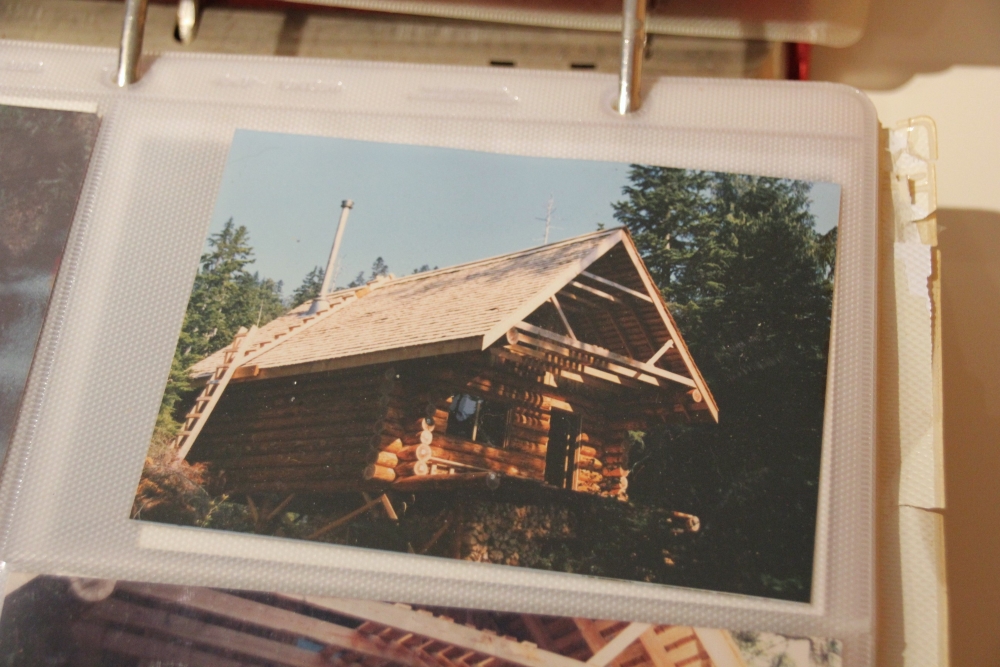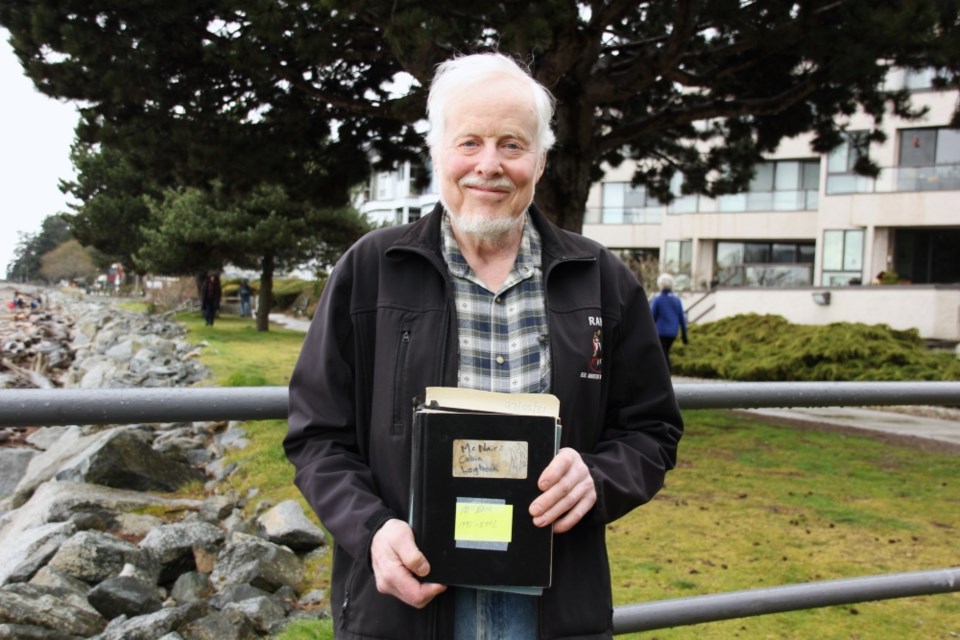If you’ve ever hiked into the Tetrahedron Provincial Park, picked up a pen and left your mark in a guestbook, congratulations. Your writing is part of a project that has been decades in the making.
Patrick Mark, a long-time volunteer and former president of the Tetrahedron Outdoor Club, is spearheading the digitization of the logbooks from the park’s four cabins. Over the years, he’s collected around 36 of the books, filled with pages of adventures and misadventures.
In those pages, Mark hopes to find the bigger picture of the park. Hundreds of volunteers built the sprawling trails and the four cabins in 1987, in what later became the provincial park, and have been stewards maintaining them ever since.
“This is our history,” Mark said. “They give you a real slice of life on the Sunshine Coast.
“If you just had a logbook from one cabin, it doesn’t tell you much. But when you have the logbook from four different cabins and you start to read all of them, you get a real different picture…”

Of the four cabins, Edwards is the most visited, because of its easier access. Next is Batchelor, once known as a favourite site for partiers. (The guestbooks were once used to track down the teens who vandalized a cabin. Yes, they’d signed their names.) Then Mt. Steele and McNair. Many school groups have visited the cabins and have left them spotless, Mark said, as he commented on the importance of teaching kids proper cabin and trail etiquette.
Today, the guestbooks show their age. The bindings are taped in place and some are missing pages — likely torn out to be used as kindling. (Mark would like cabin goers to please pack their own kindling for starting fires. He recommends a newspaper.) Stories, signatures and drawings outline the weather, conditions and experiences of visitors. As he goes, Mark is collecting the email addresses noted in the books and plans to contact people to let them know of the project.
“That’s what’s in here,” Mark said, tapping a logbook. “Constant surprises.”
Mark became involved with the club after he moved to Sechelt in 1990. The 75-year-old (40 at heart) likes to find himself in the woods, which is where he was when he bumped into hikers carrying skis into the Tet’s backcountry. They were members of the club and encouraged him to get involved.
For Mark, the Tetrahedron offered an escape. “I can go there and leave the world behind. And I know that everybody I meet will have a story to tell,” Mark said.
Over the years, Mark also became involved in the creation of Dakota Ridge. He figured that, if the club wanted people to visit the cabins year-round, there needed to be a place on the Coast where the public could learn how to ski and snowshoe. Some winters, he’ll truck down snow from Dakota Ridge to build snowmen on the grass in front of Sechelt’s cenotaph to declare the season open.
Mark wants the digitization project to produce a high quality record of the guestbooks as they are, swear words and crude drawings included. A computer program will correct the curve of the page and capture the colours.
The digitization project is looking for volunteers. People who want to help don’t need to be skiers or even members of the club but should have a high quality smartphone and an attention to detail. Mark hopes to find a volunteer adept at conducting interviews to include in the final project and he’s been collecting photographs to accompany the scans. Interested folks can contact the Tetrahedron Outdoor Club through its website, tetoutdoor.ca or Facebook.
Mark is also looking for a few of the guestbooks that have gone missing over the years and encourages anyone who knows where they are to get in touch.
Mark hopes to have the guestbooks online by Christmas 2024 and has plans to include the scans in national archives and regional libraries. After all, he says, people from the world over have spent time in the huts in Sechelt’s backyard.
If you’re heading up to the Tet anytime soon, Mark would be happy if you burned this newspaper. And don’t forget to sign the guestbook.



